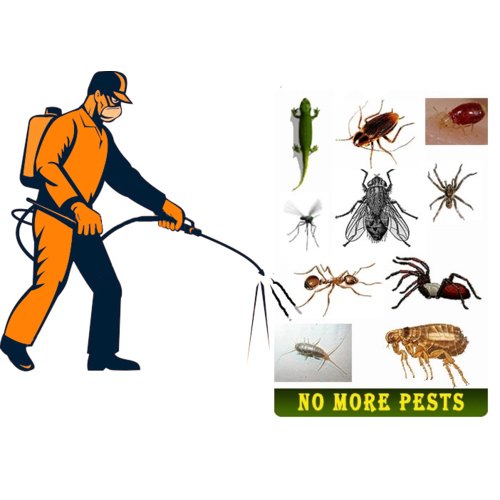Discovering Problem and Treatment Techniques on the planet of Insect Control
The landscape of pest control encompasses a myriad of difficulties, especially as problems of usual household insects proceed to advance. By incorporating preventative measures with advanced administration methods, such as Integrated Bug Monitoring (IPM), home owners can much better safeguard their environments.

Typical House Vermin
When it involves handling our space, understanding common household pests is essential. These insects not only disrupt our comfort but can also pose health risks and damage residential or commercial property. The most prevalent household parasites consist of ants, roaches, rodents, termites, and bed insects.
Ants, commonly seen foraging in kitchen areas, can contaminate food and develop big swarms. Rats, including computer mice and rats, can trigger architectural damage and carry illness like hantavirus and salmonella.
Acknowledging the signs of these parasites, such as droppings, nests, or bite marks, is essential for very early intervention (Pest Control Lockhart). Correct sanitation techniques, sealing access points, and preserving a clutter-free environment are reliable preventative steps. By recognizing these common family pests and recognizing their behaviors, house owners can take proactive actions to mitigate invasions, making certain a healthier living setting
Understanding Pest Infestations
Pest infestations can escalate rapidly, turning a minor inconvenience into a considerable issue if not attended to without delay. Usual factors adding to infestations consist of inadequate hygiene, architectural susceptabilities, and seasonal adjustments that drive parasites inside.
Recognizing the kind of parasite is crucial, as various varieties show different habits and reproductive rates. Rats might establish nests in covert areas while pests like roaches prosper in moist environments. Early discovery usually rests on recognizing indicators such as droppings, nibble marks, or unusual audios, which can indicate an issue before it comes to be serious.
Warm, humid climates can assist in the fast development of pest populations, while changes in landscape design or building and construction can unintentionally produce conducive settings. An informed technique to comprehending these characteristics lays the groundwork for effective pest management strategies in the future.
Therapy Methods and Strategies
Effective therapy techniques and techniques are essential for reducing insect infestations and restoring a risk-free setting. A multifaceted technique is typically best, integrating chemical, biological, and mechanical approaches customized to the details bug and the severity of the invasion.
Chemical therapies include making use of insecticides and herbicides, which can efficiently eliminate bugs. Proper application and adherence to safety and security guidelines are essential to minimize risks to humans and non-target microorganisms. Integrated Insect Management (IPM) visit this web-site motivates the cautious use of chemicals as a last option, counting rather on tracking and limit levels to determine treatment demands.
Biological control methods include presenting natural killers or bloodsuckers to minimize parasite populaces. This strategy is progressively popular, particularly in farming settings, as it promotes environmental sustainability.
Mechanical approaches, such as catches and obstacles, provide prompt remedy for pests without presenting chemicals. Alternatives include sticky traps for pests or physical obstacles for rats.
Ultimately, the choice of treatment method must think about the specific insect, the setting, and potential influences on human health and communities. A balanced mix of these methods can efficiently take care of infestations while promoting lasting parasite control services.
Precautionary Measures for Residence
Proactively attending to pest issues before they intensify is crucial for maintaining a healthy and balanced home atmosphere (Pest Control Lockhart). Executing efficient preventive actions can dramatically lower the chance of infestations, eventually protecting both your building and health

Correct landscaping also plays a crucial function in avoidance. Maintaining hedges and trees trimmed away from the residence reduces the opportunities of pests finding their method indoors. Make sure that drain systems are operating successfully to protect against standing water, which can attract in mosquitoes and various other pests.
Finally, routine inspections are a good idea. Consistently looking for indicators of bug activity permits early treatment. By taking on these safety nets, property owners can develop a setting that is much less friendly to parasites, therefore boosting their overall lifestyle and reducing the requirement for comprehensive parasite control interventions.
Business Bug Control Methods
A thorough method to business parasite control is crucial for companies aiming to maintain a secure and hygienic environment. Efficient approaches include a mix of regular assessments, staff member training, and the implementation of Integrated Pest Administration (IPM) techniques.
Normal explanation evaluations allow very early detection of bug task, permitting prompt treatment. Businesses must develop a routine schedule for these evaluations, concentrating on high-risk areas such as cooking areas, storeroom, and garbage disposal websites. Employee training is hop over to here equally vital; team must be educated on the signs of insect problems and the value of reporting them instantly.
Executing IPM techniques assists minimize insect concerns sustainably. This consists of environment modification, such as securing entrance points and lowering clutter, as well as using all-natural deterrents prior to turning to chemical therapies.

Moreover, working together with a certified parasite control service provider makes sure accessibility to specialist understanding and innovative therapy alternatives. This partnership can cause customized bug control plans tailored to the particular demands of business, lessening threats and improving total efficiency. Ultimately, a proactive and informed method fosters a pest-free environment, securing both public wellness and business track record.
Final Thought
In conclusion, effective insect control requires a detailed understanding of common family pests and their actions, combined with targeted therapy approaches. Implementing preventative actions alongside therapy techniques such as Integrated Parasite Administration and biological control boosts the ability to minimize invasions.